Physical Address
304 North Cardinal St.
Dorchester Center, MA 02124
Physical Address
304 North Cardinal St.
Dorchester Center, MA 02124

Discover 23 thoughtful tips for designing a teenager's bedroom. Learn to create a personal sanctuary that blends style, study, and soul—a true reflection of them.
Can we talk about the great tragedy of the teenage bedroom? My pet peeve is that we treat it like a holding cell that needs to be decorated. We see a space to be managed, a problem to be solved with a coat of paint and some furniture from a catalog. We browse online for “teenage bedroom inspirations” and are served up a parade of soulless, trend-chasing rooms that could belong to anyone, and therefore, truly belong to no one. But a teenager’s room is not just a room. It is their first real studio, their personal archive, their laboratory of the self.
Picture this: you’re standing at the threshold of a space that feels less like a mess and more like a map of a mind in motion. Books are stacked not in chaos, but in emergent categories of interest. Art isn’t just tacked to the wall; it’s a curated exhibit of a burgeoning soul. It is a space designed not just for sleeping, but for thinking, dreaming, and becoming. That is the room we should be striving to create. It’s less about interior design and more about a kind of intellectual and emotional architecture. Here’s how you can move beyond the noise and help them build a space that truly matters.
Before a single can of paint is opened, the real work begins. This is the cartography of the soul, mapping out the needs and dreams that will give the space its true north. We’re not just picking colors; we are laying a foundation of purpose.
Everyone is obsessed with finding an “aesthetic.” It’s a hollow, fleeting term borrowed from social media. It suggests a style can be put on and taken off like a coat. But a truly personal space is built from something much deeper—what I like to call a personal canon. It’s the collection of ideas, colors, textures, and feelings that are authentically theirs. This isn’t about copying a ‘cottagecore’ or ‘dark academia’ board; it’s about excavating the real story of who they are and what makes them feel at home in the world.

Forget asking them to just create a Pinterest board. That’s a shortcut to a secondhand identity. Instead, have a real conversation. Ask questions like: “If you could live inside any book or film, what would it feel like?” or “What three objects in this house tell a story about you?” I once worked with a young man whose parents were convinced he wanted a minimalist, techy room. But after we talked, we discovered what he truly craved was the quiet, organized comfort of a rare book library’s reading room. We built his style around ‘scholarly sanctuary,’ not ‘gamer chic.’ That room will last him a decade. His aesthetic would have lasted six months.
Once you have a grasp on their true north, you can begin the practical work of charting the course.
The romance of design can quickly sour in the face of financial reality. It’s a terrible feeling to help a young person fall in love with a vision, only to crush it by saying, “We can’t afford that.” Establishing a budget isn’t a restriction; it’s a creative constraint that forces ingenuity. The most memorable spaces I’ve ever helped create were not the ones with unlimited funds, but the ones where every dollar was spent with intention. You avoid the stress, the arguments, and the creeping dread of overspending.

I wish someone had told me this earlier: break the budget into three simple categories: Foundation, Function, and Flourish. ‘Foundation’ is the big-ticket, long-lasting stuff like a quality bed frame or desk. ‘Function’ covers the essentials like lighting and storage bins. ‘Flourish’ is for everything else—the art, the textiles, the personal touches. By allocating funds this way, the teen can see where the real investment is and where they can get creative with thrift finds or DIY for the ‘flourish.’ It teaches them a profound lesson in value and resourcefulness that’s worth more than any fancy chair.
Now that the financial lines are drawn, let’s look at the room’s greatest natural asset.
Before you even think about lamps, consider the light you already have. Natural light is life. It is the single most powerful tool for shaping the mood and feel of a space, and it costs absolutely nothing. We have known for centuries what modern science is now proving with data: spaces filled with daylight improve focus, elevate mood, and connect us to the rhythm of the world outside. A room shrouded in darkness, no matter how well-decorated, will always feel a little bit like a tomb.
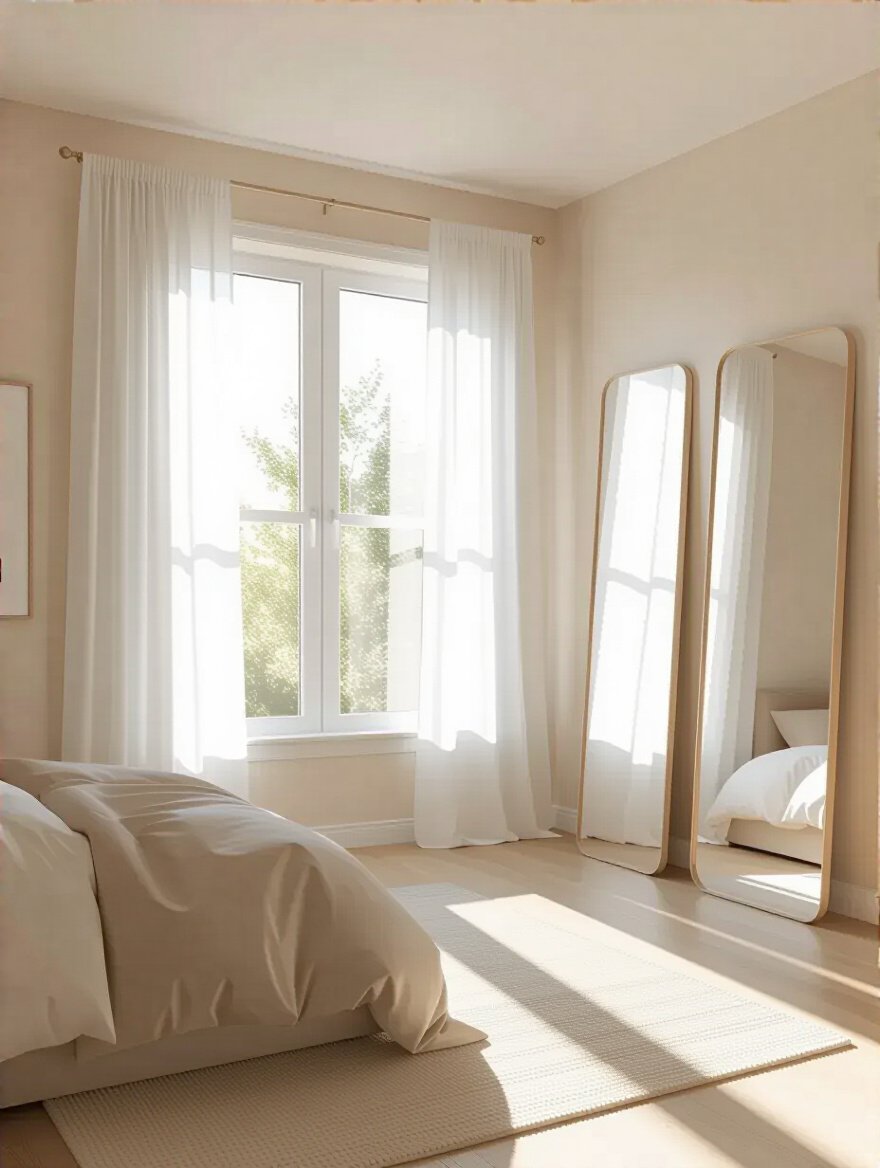
Don’t just open the blinds; conduct the light. Think of mirrors not as tools for vanity, but as instruments for redirecting sunlight. A large mirror placed opposite a window can double the perceived light in a room. Choose sheer curtains or top-down shades that allow for privacy without plunging the room into shadow. And paint color? The single biggest mistake people make is choosing a dark, moody color for a small, dark room. It doesn’t make it cozy; it makes it oppressive. A simple, light-reflecting white or pale neutral doesn’t just brighten the room; it makes every color you place within it more true.
With the light optimized, you can begin to visualize the entire composition.
A mood board isn’t just a collection of pretty pictures. It’s a contract. It is the visual document that holds everyone accountable to the vision you co-created in the beginning. Most design arguments between parents and teens happen because of a failure to communicate a vision. A proper mood board prevents this. It’s the tangible proof of your agreement, a constant reference point that guides every decision, from the bedspread to the drawer knobs. When your teen later begs for some trendy item that clashes with everything, you can gently point to the board and ask, “How does that fit into the world we agreed to build?”
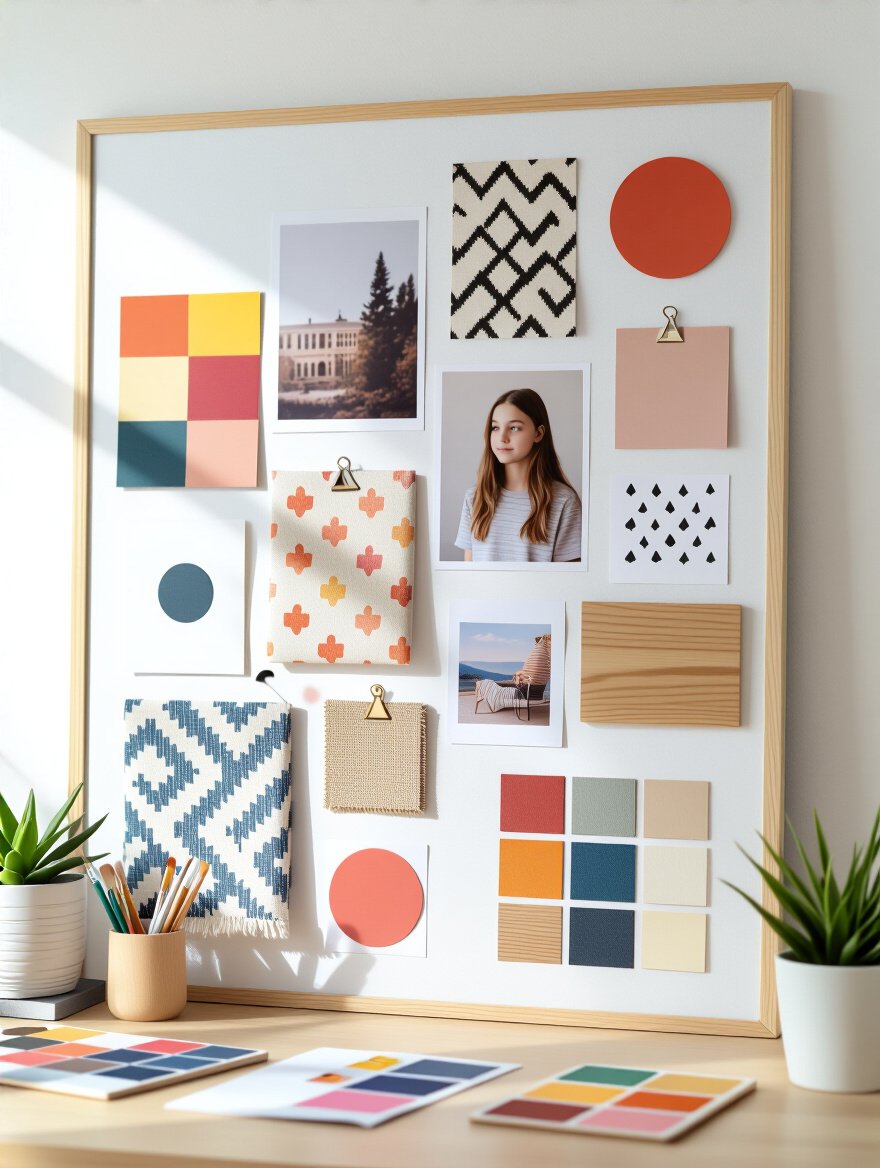
But a good mood board has to be more than just images. The secret is to make it tactile. Glue on fabric swatches. Staple on paint chips. Tape a small piece of wood that matches the desk you’re considering. The human hand is an organ of intelligence; we understand things more deeply when we can touch them. I worked with a family that was completely stuck until we built a physical board. The daughter was able to feel the difference between a cheap polyester velvet and a soft, worn cotton. The board didn’t just show them the look; it showed them the feeling.
This blueprint will now guide the very architecture of the room.
A teenager’s room must serve three distinct inner lives: the Scholar who needs to focus, the Dreamer who needs to rest, and the Idler who needs to lounge and connect. If these functions blur together, chaos reigns. Doing homework in bed leads to poor sleep; scrolling on a phone in the study area wrecks concentration. Creating distinct zones—even just psychologically—is the key to a room that works. It brings order to the mental space as much as the physical one.
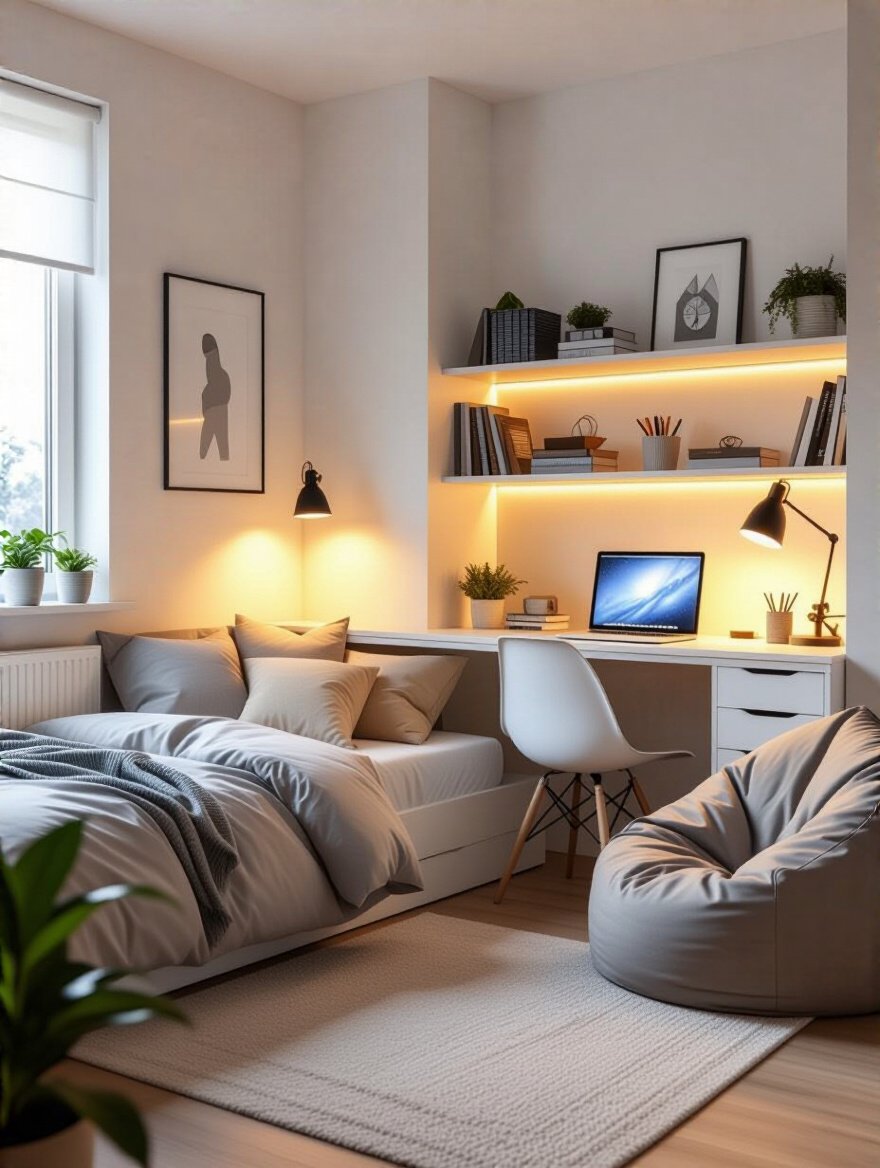
You don’t need walls. You can define these zones with simple, powerful tools. An area rug can anchor a “chill” zone with a beanbag and some floor cushions. A bookshelf can act as a low-profile divider between the bed and the desk. Even lighting can delineate space—a focused task light for the desk, a warm ambient glow for the relaxation corner. The goal is to create subtle environmental cues that tell the brain what it’s supposed to be doing in that part of the room. This single act of organization can have a more profound impact on their productivity and peace of mind than any other design choice.
With a clear vision, it’s time to bring in the physical elements. This is about choosing pieces that are not just beautiful, but clever, hardworking, and respectful of the space they inhabit.
In a small room, the bed is a tyrant. It’s a massive, single-function object that devours floor space. The solution is to choose a bed that earns its keep. A multi-functional bed—be it a loft bed with a desk beneath, or a captain’s bed with deep, practical drawers—is the single greatest space-saving maneuver you can make. It reclaims square footage that would otherwise be lost forever.
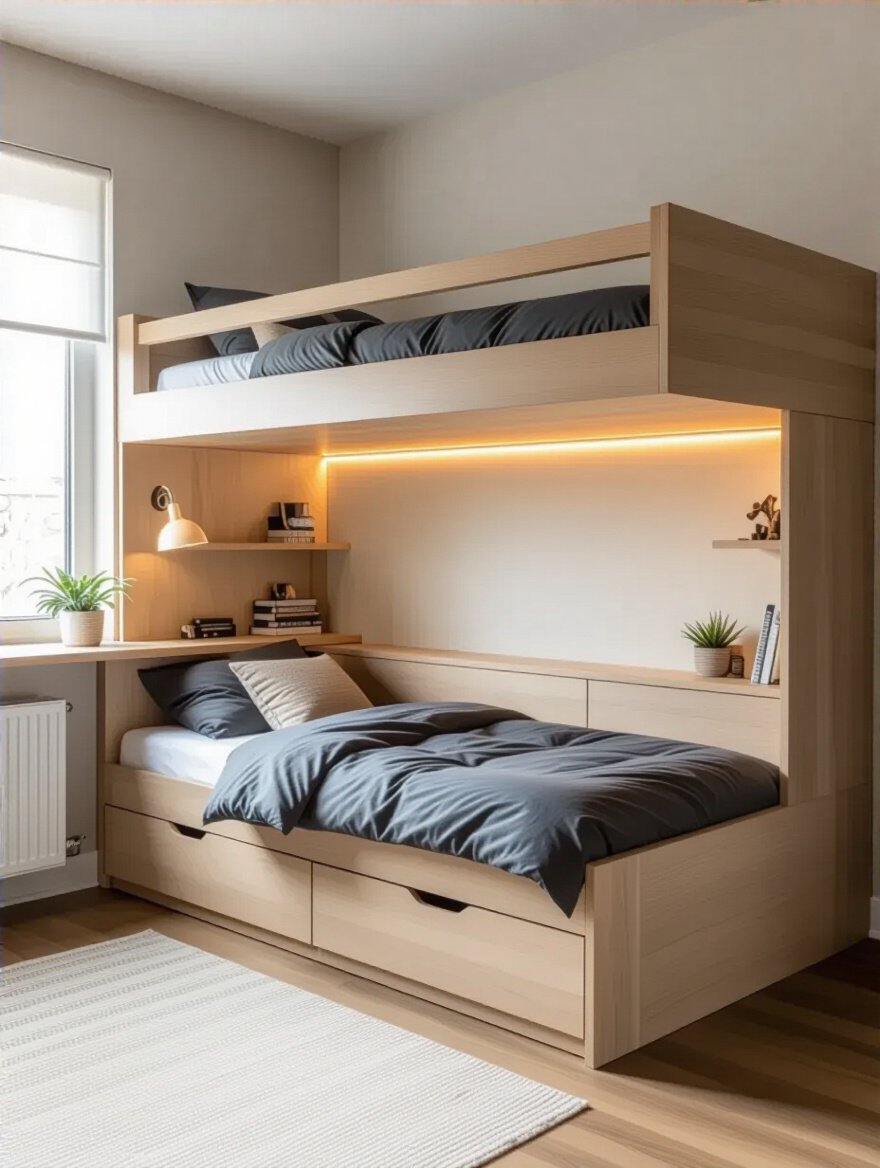
I once worked with a young writer living in a room that was barely bigger than a closet. Her standard twin bed left her no space for a proper desk. We swapped it for a simple loft bed. Suddenly, she had a seven-foot-long desk surface underneath, lined with bookshelves. We didn’t add an inch to the room, but we effectively doubled its usable space. She called it her “writing tower.” It wasn’t just furniture; it was a structure that enabled her passion.
And that same principle of smart space usage applies to the walls.
Book lovers and librarians have always known the secret to storing an immense amount of material in a small space: you go up. The walls are your most underutilized asset. Getting storage off the floor and onto the walls makes a room feel larger, more organized, and more intentional. Floating shelves and tall, narrow bookcases draw the eye upward and transform empty plaster into a place for storage and display.
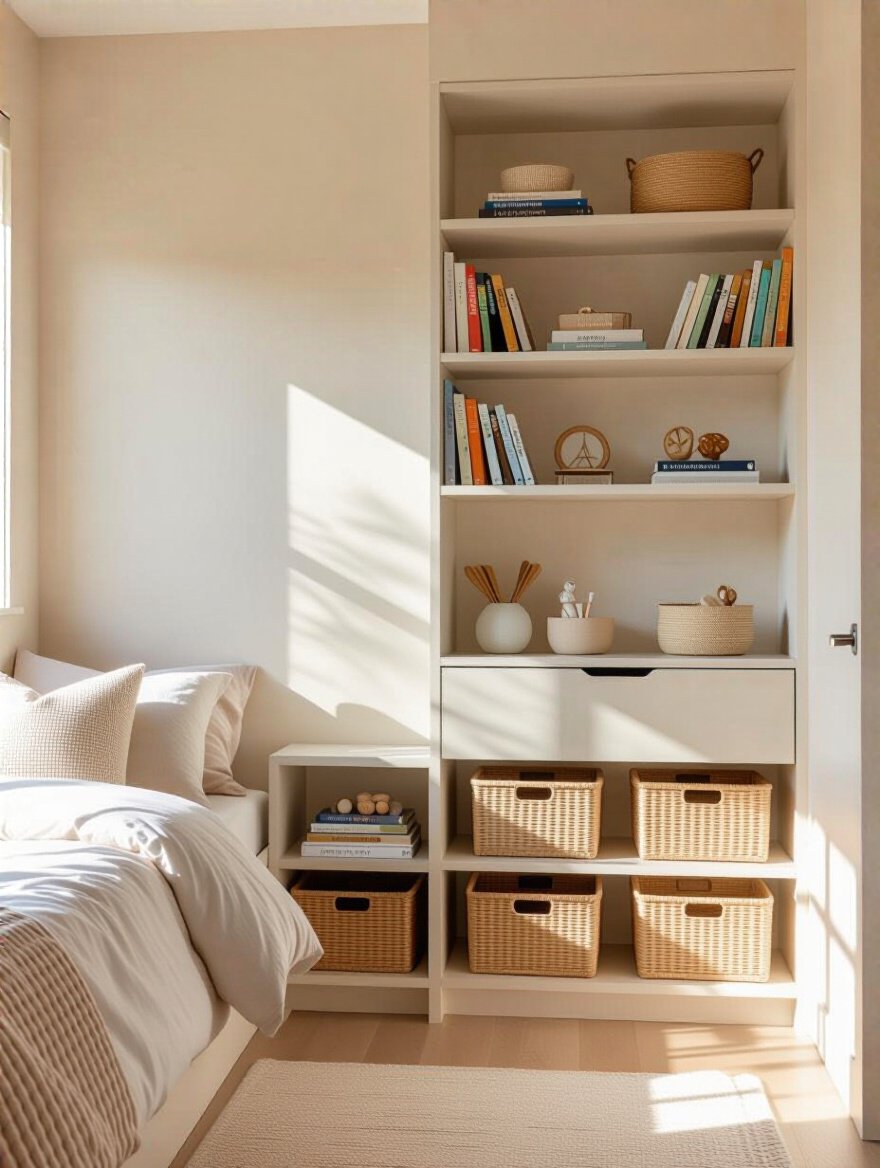
A client once despaired over her son’s room, which was littered with books, collectibles, and model kits. It felt claustrophobic and messy. Instead of buying more clunky floor units, we installed a system of simple floating shelves that ran from his desk all the way to the ceiling on one wall. Instantly, the floor was clear. His collections were no longer clutter; they were a curated display. The room breathed again. He felt like his interests were being honored, not just tolerated.
With the heavy lifting done, consider the lighter-weight pieces.
A teenager’s social life is fluid, and their room should be, too. A huge, stationary armchair is a commitment a small room can’t afford. You need flexible seating that can be pulled into a conversation, pushed out of the way for a project, or tucked away entirely. Think stackable floor cushions, a storage ottoman that can double as a seat, or a classic beanbag chair.
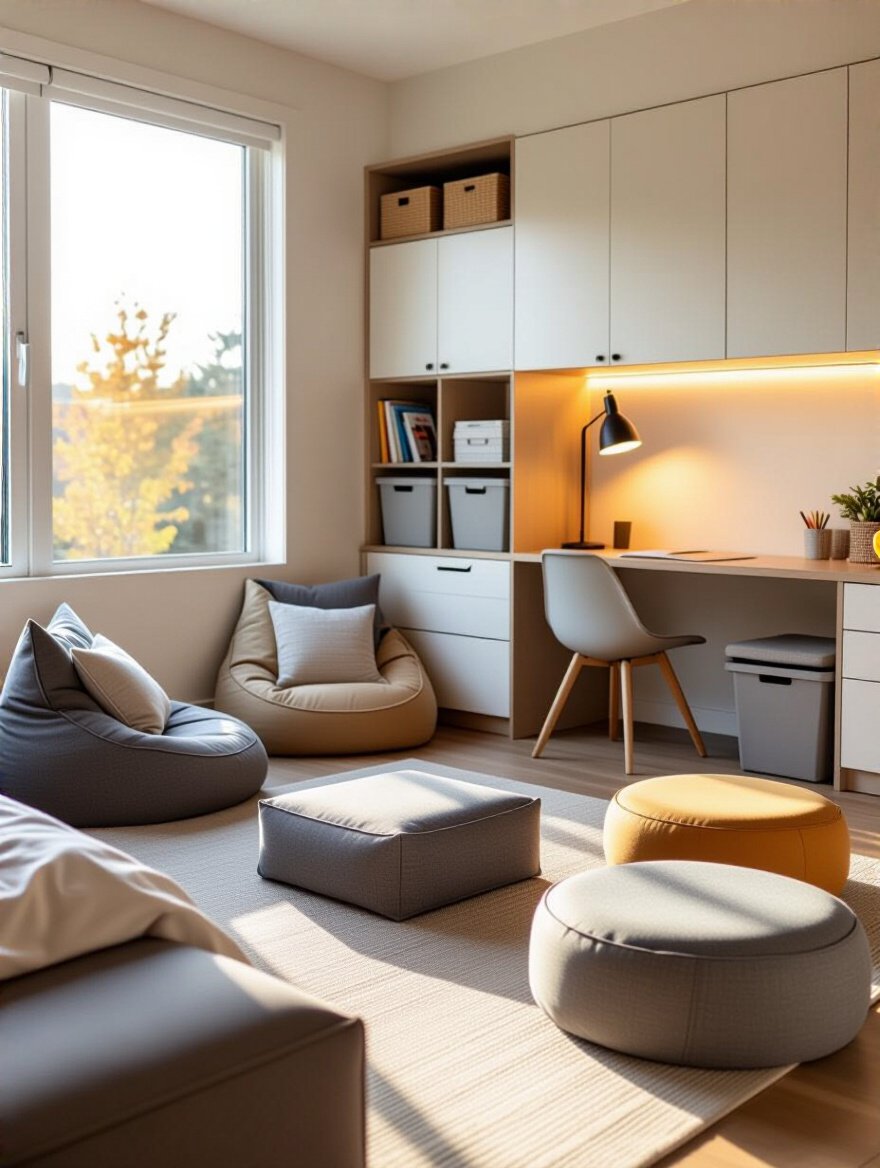
The trick is to think about furniture not as static objects, but as a team of players that can be rearranged for different plays. Two small ottomans are infinitely more useful than one big chair. They can be seats, footrests, or makeshift tables. This approach allows a private sanctuary to transform into a social hub in seconds, respecting a teenager’s deep need for both solitude and connection.
And where they do their most important work, comfort is not a luxury.
A desk is not just a table. It is an altar for the mind. Forcing a teenager to do hours of homework hunched over a flimsy, ill-fitting surface is a form of subtle disrespect for their work. An ergonomic setup—a desk at the right height, a supportive chair—is a fundamental investment in their physical well-being and their academic success. When the body is comfortable and supported, the mind is free to focus on the task at hand, not on a nagging backache.

I used to think this was all fussy nonsense until I spent a week writing at a poorly designed hotel desk. By day three, my focus was shot, my neck was aching, and my mood was foul. Providing them with a proper, adjustable desk and chair isn’t spoiling them; it’s giving them the same respect for their workspace that we would demand for our own. It signals that their work is important, and that their comfort matters.
And the arrangement of these pieces is just as important as the pieces themselves.
Think of your room’s layout like a dance. There should be a natural flow, clear pathways from one area to another. Too often, people just shove all the furniture against the walls, creating a strange, empty “no-man’s-land” in the middle. A well-designed layout creates an effortless sense of movement and makes the room feel more spacious and intuitive.
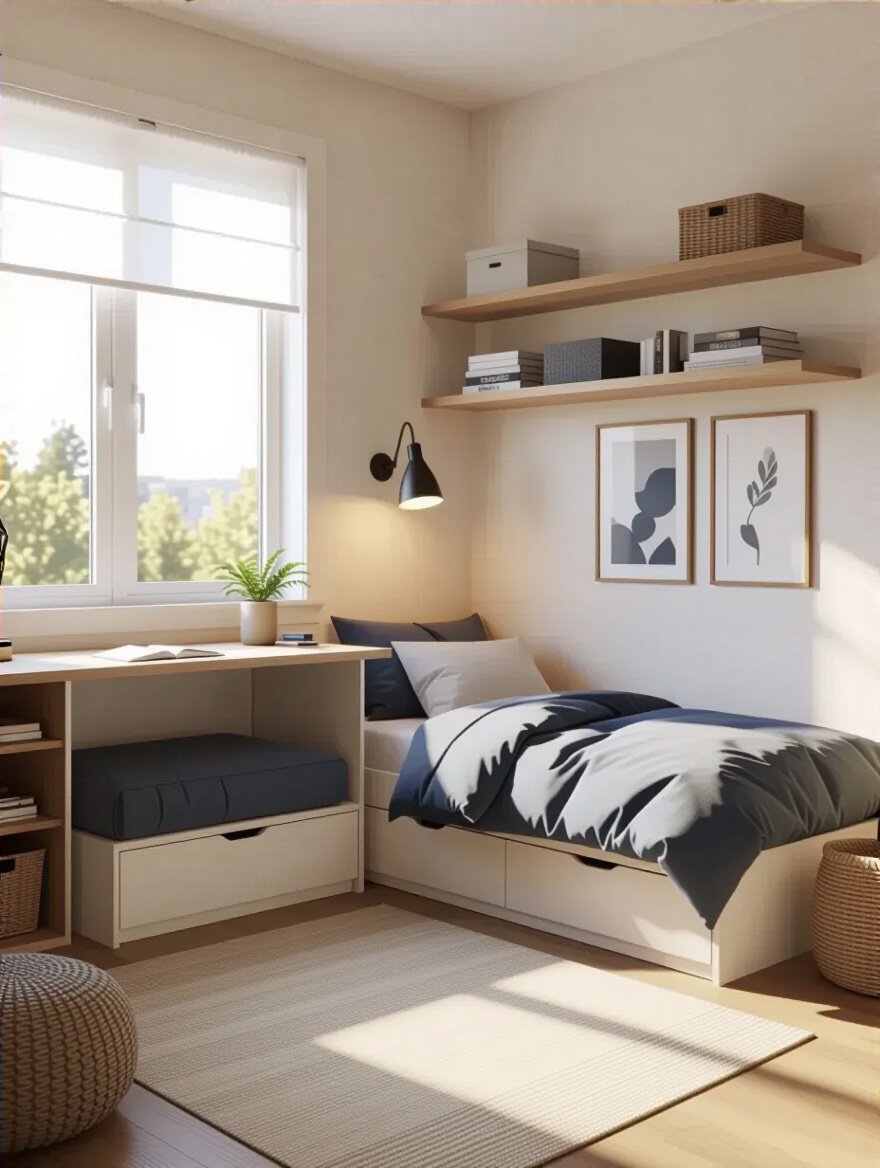
Before you move a single heavy object, map it out on paper or with a simple online tool. Create clear, unobstructed paths from the door to the bed, the bed to the desk, and the desk to the closet. These are the primary “desire lines.” Sometimes pulling a desk away from the wall or angling a bookshelf can completely transform the energy and usability of a room. It’s a bit of extra thought that pays off every single time they walk into the room.
Finally, think about the long game when choosing these core pieces.
It’s tempting to buy cheap, trendy furniture for a teenager. It feels disposable, just like their current obsessions. This is a false economy. Poorly made particleboard furniture falls apart, looks shabby quickly, and ends up in a landfill. Instead, invest in a few “foundation” pieces of quality, versatile furniture with timeless design. A simple, well-made wooden dresser or a classic metal-frame bed can serve them through high school, go with them to their first apartment, and even last into their adult life.

My parents bought me a simple, solid oak desk when I was fifteen. It wasn’t trendy. It was just a good desk. I am typing on it right now, decades later. It has been a silent witness to my entire adult life. Buying quality isn’t about status; it’s about sustainability and respect for craftsmanship. You teach them that some things are meant to last, and you give them a piece of their history to carry into their future.
This is where the room truly becomes theirs. The furniture is the grammar, but the decor is the poetry. This is the art of infusion, where their personality is layered onto the functional foundation.
A gallery wall is one of the most powerful ways for a teen to stake their claim on a space. It’s far more than a random collection of posters. A well-curated gallery wall is a living autobiography in pictures. It’s a chance for them to be the curator of their own life, displaying the art, photos, ticket stubs, and quotes that tell the story of who they are right now.

The secret is to lay it all out on the floor first. Play with the composition, mixing large and small frames, vertical and horizontal orientations. Look for a sense of balance, not perfect symmetry. And don’t be afraid to mix in three-dimensional objects—a small shelf with a treasured object, a string of lights, a piece of fabric. I once helped a client’s daughter frame her grandfather’s handwritten letters alongside concert posters and her own sketches. It was a stunning, deeply personal wall that honored her past, present, and future.
Now, let’s illuminate that art properly.
A single, harsh overhead light is the enemy of ambiance. It casts unflattering shadows and makes a space feel like an interrogation room. To create a room that can be both a bright workspace and a cozy retreat, you need to layer your lighting just like a set designer. This means having three types of light: ambient (the general, overall light), task (focused light for reading or homework), and accent (mood lighting).
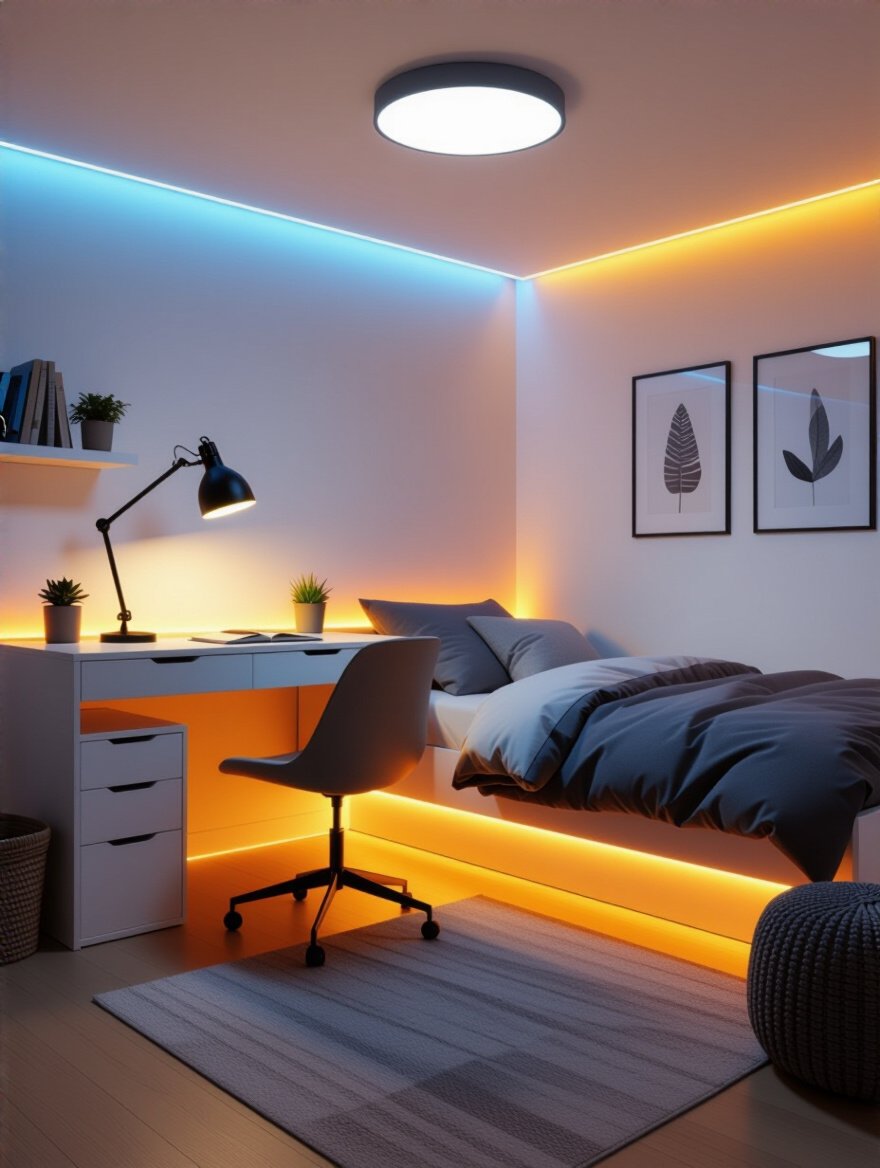
Think of it this way: the ceiling fixture provides the base layer of ambient light. A good desk lamp and a bedside reading light provide the focused task lighting. And finally, you add the magic with accent lighting—a string of fairy lights, an LED strip behind the headboard, or a small spotlight aimed at a favorite piece of art. Giving them control over these layers, especially with dimmers or smart bulbs, allows them to orchestrate the mood of their room for any activity or feeling.
And sometimes, the best art is the art they make themselves.
There is a special pride that comes from living with something you made with your own hands. DIY projects aren’t just a budget-friendly way to decorate; they are a profound act of personalization. A hand-painted mural, a custom-built shelf, or even a simple piece of abstract art created with leftover paint makes a room undeniably unique. It infuses the space with their energy and effort in a way that no store-bought item ever could.
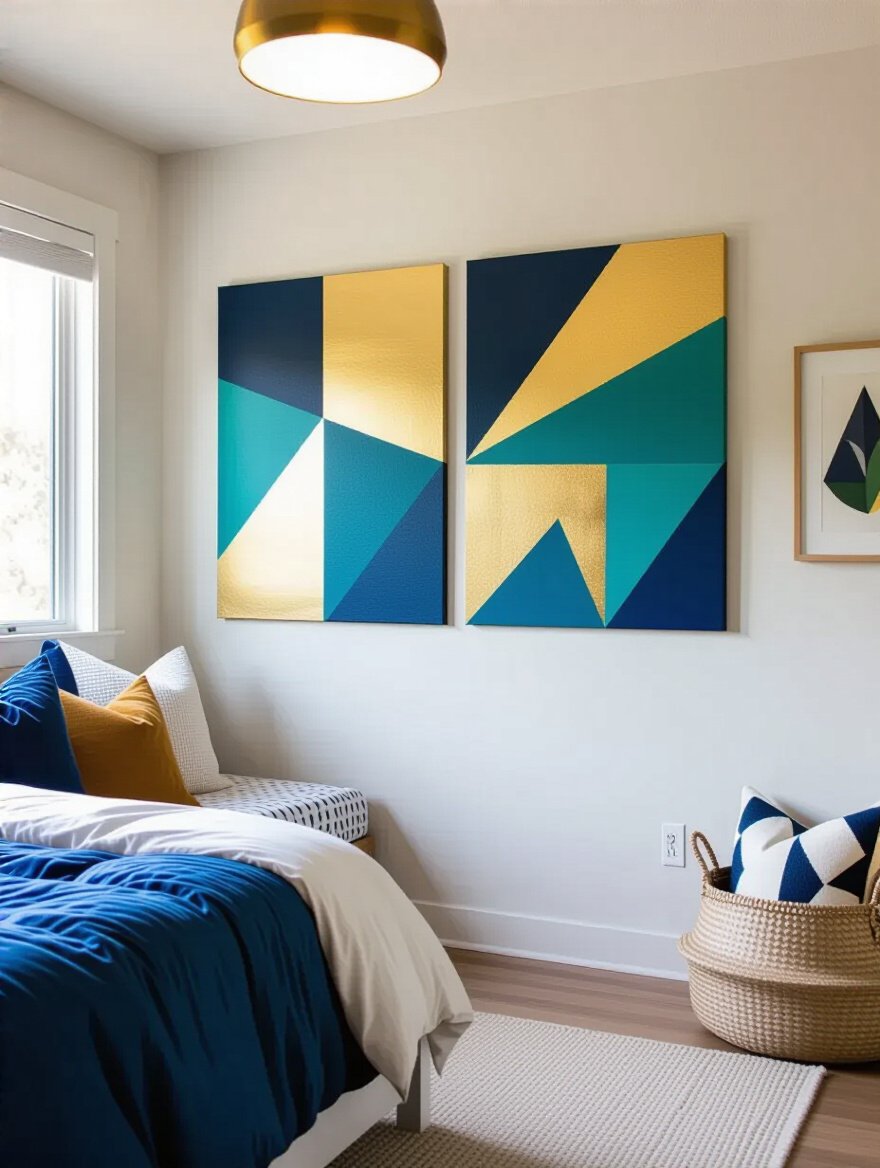
A project doesn’t have to be complicated. I once saw a teenager create a stunning, graphic headboard simply by using painter’s tape to create a geometric pattern on the wall behind her bed and painting inside the lines. It cost less than $20 and took one afternoon, but it completely transformed the room into a bold, personal statement. The act of creation fosters a sense of competence and ownership that is priceless.
And the quickest way to change a room’s mood? Through texture.
Hard surfaces can make a room feel cold and impersonal. The fastest way to add warmth, comfort, and character is through textiles. A plush rug, a collection of varied pillows, and a soft throw blanket are the elements that invite a person to relax and feel safe. They absorb sound, provide tactile pleasure, and add layers of color and pattern.
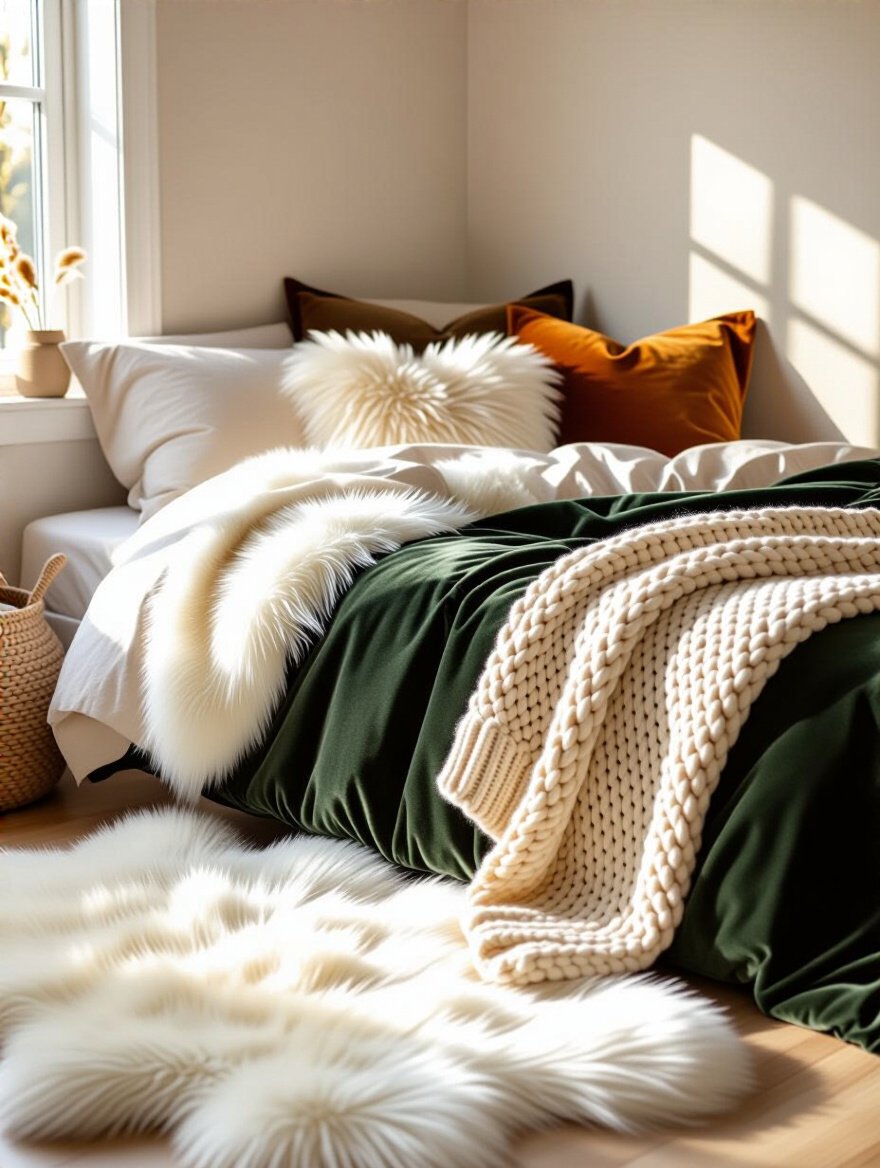
Think beyond just the bedding. A chunky knit throw draped over a desk chair, a sheepskin rug next to the bed for bare feet in the morning, a few velvet or corduroy pillows mixed in with the standard cotton—these small touches make a monumental difference in the perceived comfort of a room. It’s the difference between a sterile showroom and a cozy, livable nest.
Let’s also make a proper home for their treasured objects.
Every teen is a collector of something, whether it’s vinyl records, vintage postcards, Funko Pops, or beautiful rocks. These collections are not clutter; they are artifacts of their passions. Give these items the respect they deserve by creating a dedicated space for their display—a modern-day “cabinet of curiosities.” This honors their interests and turns potential clutter into a personal museum.
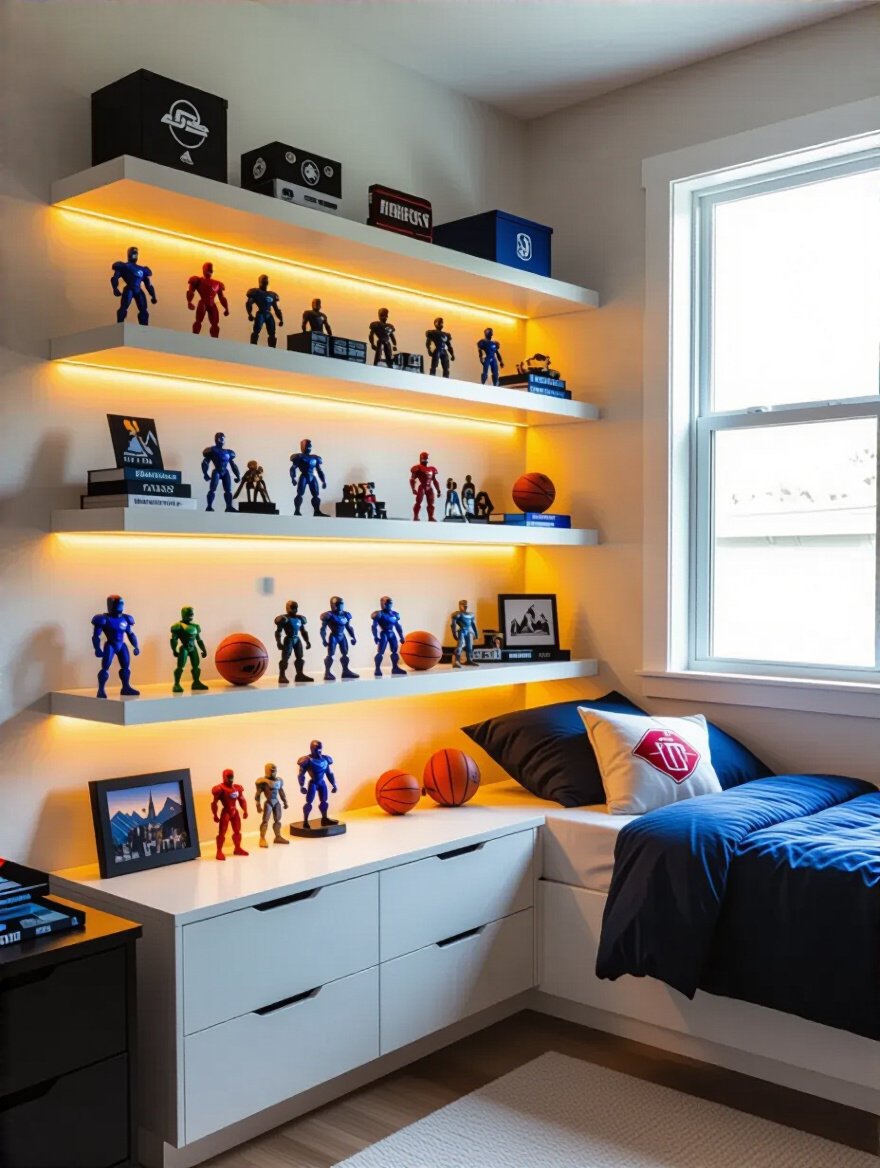
This doesn’t require a fancy glass case. A few simple floating shelves, a clear acrylic riser on a dresser, or even a well-organized bookcase can do the trick. The key is to arrange the items with intention. Group them by color, size, or theme. Add small labels if it suits their personality. This act of curation elevates their hobby and integrates it beautifully into the design of the room, making their personality a literal part of the architecture.
And for the pieces that aren’t quite museum-worthy, a little creativity goes a long way.
Before you throw out that old, beat-up dresser, consider its potential. A can of paint is the closest thing we have to a magic wand in interior design. It can transform a drab, dated piece of furniture into a vibrant, custom focal point for a fraction of the cost of buying new. This is the ultimate act of sustainable, budget-friendly design.
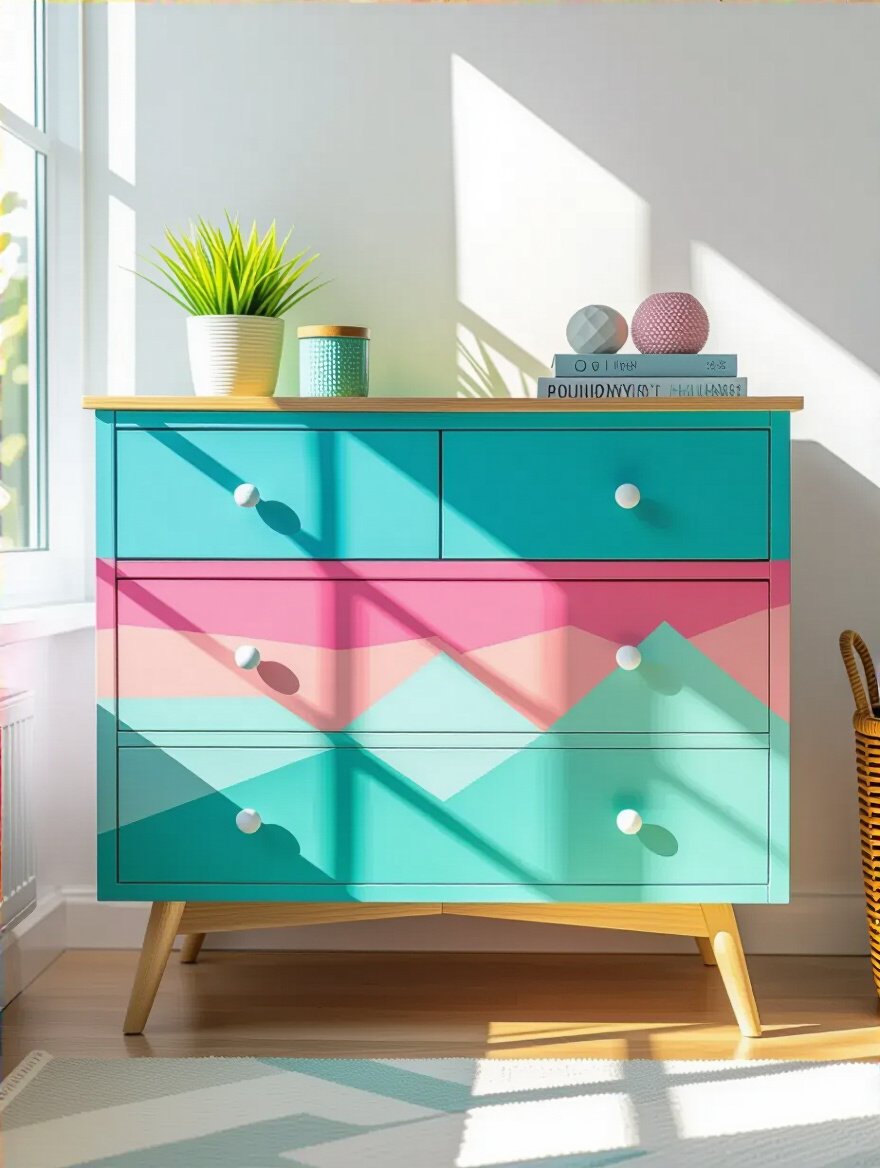
The key to a professional-looking result is preparation. Don’t skip the cleaning and light sanding. It’s tedious, but it’s the difference between a piece that looks amazing and a piece that starts chipping in a week. I once watched a 16-year-old take her grandmother’s clunky, dark-brown nightstands, paint them a brilliant lacquered teal, and add new brass hardware. The project cost her less than $50, and she ended up with two stunning, bespoke pieces that anchored her entire room.
A beautiful room that doesn’t function is just a stage set. True design marries form with function, creating a space that not only looks good but works brilliantly for the life lived within it.
The ancient wisdom holds true: “a place for everything, and everything in its place.” Clutter is simply a collection of decisions that haven’t been made yet. The most important gift you can give a teen’s room is a coherent storage system where every object has a logical home. This isn’t about being neurotically tidy; it’s about reducing the background cognitive load of a messy space, freeing up their mental energy for more important things.
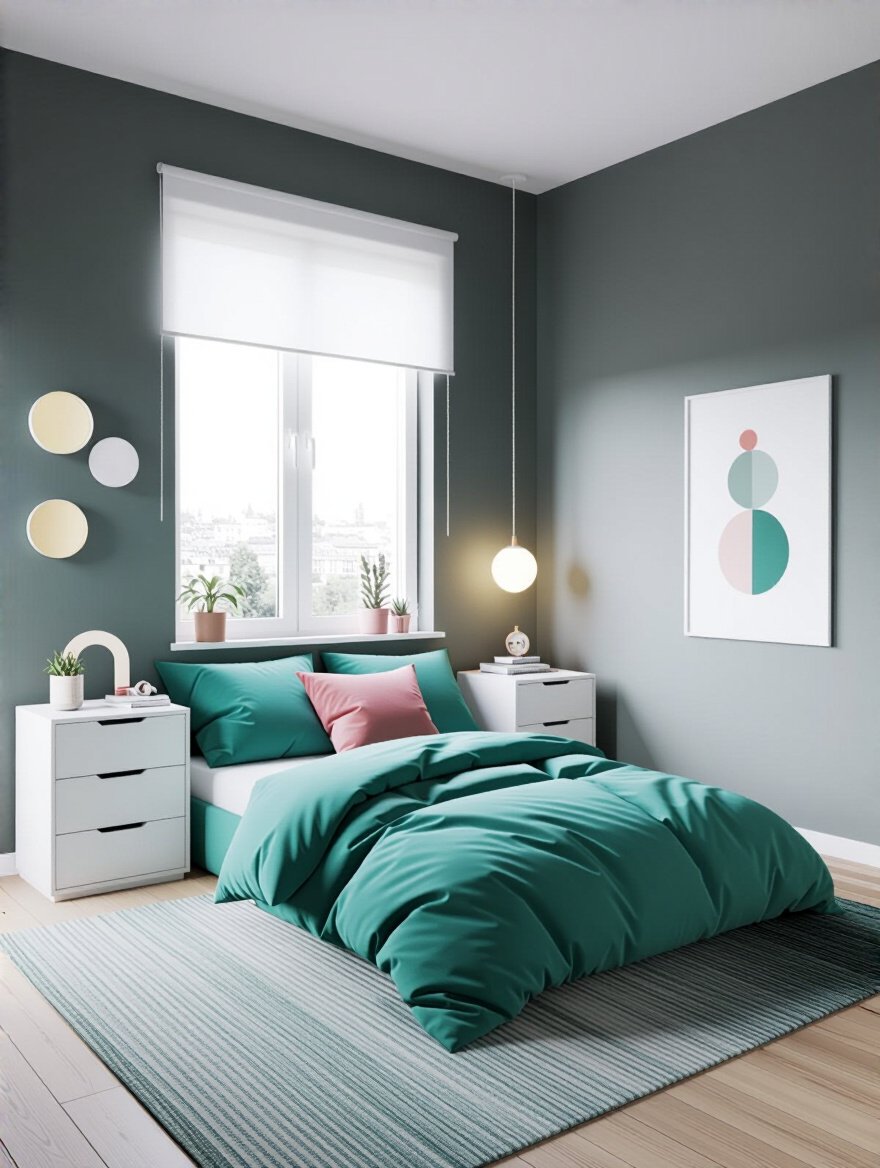
Start by helping them perform a grand purge. Then, think like a librarian. Use under-bed storage boxes for “archival” items (seasonal clothes, old projects). Use drawer dividers to categorize small items. Use vertical space for books and display items. The goal is to make putting things away just as easy as taking them out. This makes tidying up a simple, five-minute reset instead of a monumental, weekend-ruining chore.
And one of the most critical zones deserves special attention.
We already discussed the scholar’s corner, but let’s take it a step further. We need to engineer it for “deep work.” This means creating a study nook that is not only ergonomic but is also psychologically fortified against distraction. This is a space reserved for one thing and one thing only: focused thought. Keeping it separate from leisure and sleep areas creates a powerful mental trigger. When they sit down there, their brain knows it’s time to work.
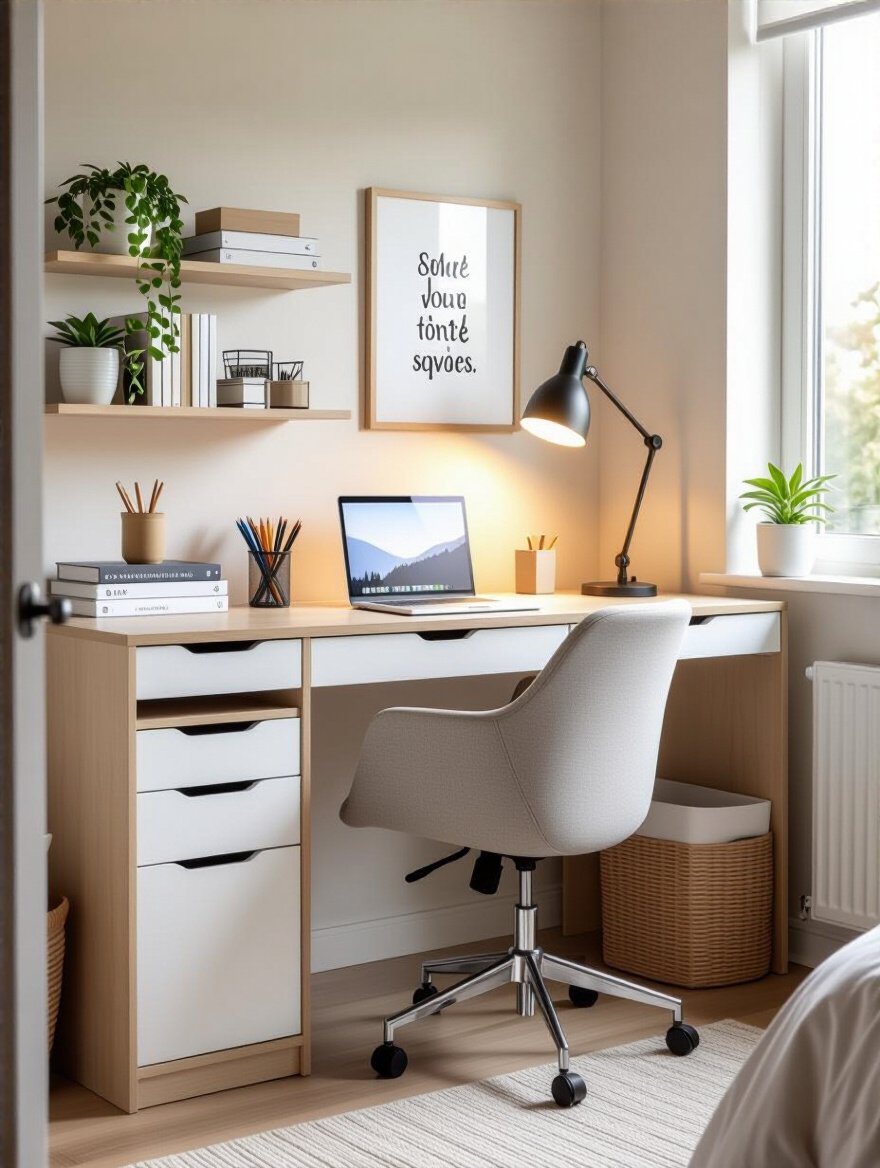
Consider a fold-down desk in a quiet corner or even converting a small closet into a “cloffice” (closet-office). Add good task lighting and simple organizational tools like a pegboard for supplies. The key is to make it a fortress of focus. I’ve seen students dramatically improve their grades simply by moving their study area from the chaotic kitchen table to a small, quiet, dedicated nook in their own room. It’s a physical boundary that reinforces a mental one.
And for all those things that don’t fit in the study nook…
The space under the bed is one of the most neglected storage opportunities in any bedroom. It’s the perfect hiding place for bulky, less-frequently-used items that would otherwise clog up precious closet space. Out-of-season clothing, extra bedding, sports equipment, old yearbooks—all of it can disappear under the bed, freeing up prime real estate for daily-use items.
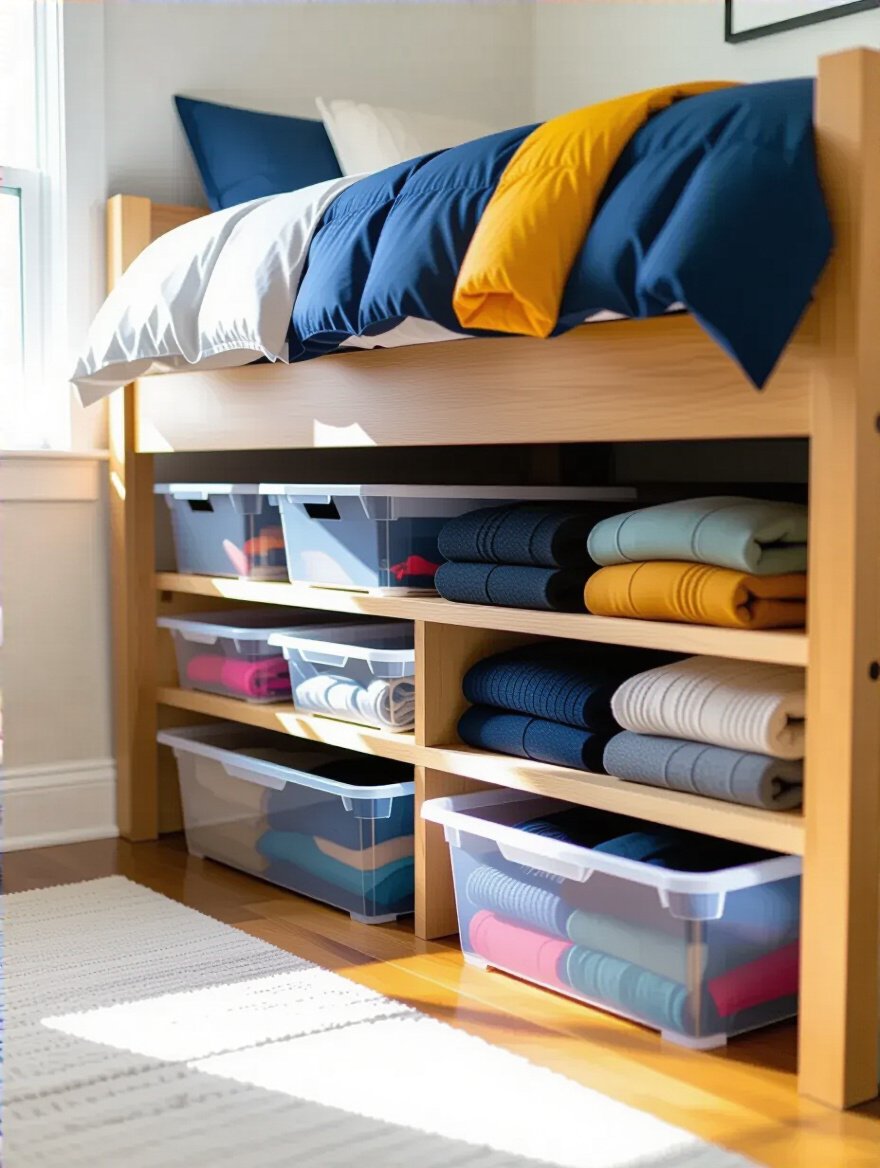
The shortcut here is to invest in the right containers. Look for long, low-profile bins with wheels for easy access and lids to keep dust out. Vacuum-seal bags are a revelation for bulky items like comforters or winter coats, compressing them to a fraction of their size. This simple strategy can instantly make a small closet feel twice as big.
Then bring that same organizational rigor to the smaller scale.
It’s the small things that create the most visual clutter: charging cables, loose papers, pens, makeup, socks. The secret to taming this chaos is containment and categorization. Bins, baskets, and drawer dividers are your best friends. Grouping like items together in a designated container brings an immediate sense of order and makes finding things effortless.

But here’s the step everyone misses: labeling. A label turns a mystery box into a known quantity. It’s a tiny bit of effort that saves countless minutes of frustrated searching later on. It doesn’t have to be a fancy label maker; a simple piece of masking tape and a marker will do. A friend’s son was constantly losing his gaming controllers and headphones. We set up two simple, labeled fabric bins on his shelf: “Controllers” and “Audio.” The problem vanished overnight.
Let’s address that biggest source of small clutter: tech.
The modern teenage room is plagued by a Medusa’s head of charging cables. They snake across desks, floors, and nightstands, creating a constant, tangled mess. Designating a single, centralized charging station is an act of supreme organizational power. It corrals all the electronic clutter into one neat, manageable spot and ensures devices are always powered up and ready to go.

This can be as simple as a power strip tucked into a box on a desk, or as elegant as a nightstand with built-in USB ports. I’m partial to creating a “charging drawer.” You can drill a small hole in the back of a desk or nightstand drawer, thread a power strip inside, and create a hidden, out-of-sight station for phones, watches, and tablets. It’s a game-changer for reducing visual noise, especially in the all-important sleep zone.
Finally, let’s deal with the rest of the wires.
Nothing cheapens the look of a well-designed space faster than a tangle of visible wires behind a desk or TV. Managing and concealing these cables is the final polish, the detail that separates an amateur setup from a professional one. It’s a small effort that yields a massive improvement in the calm, clean feel of a room.
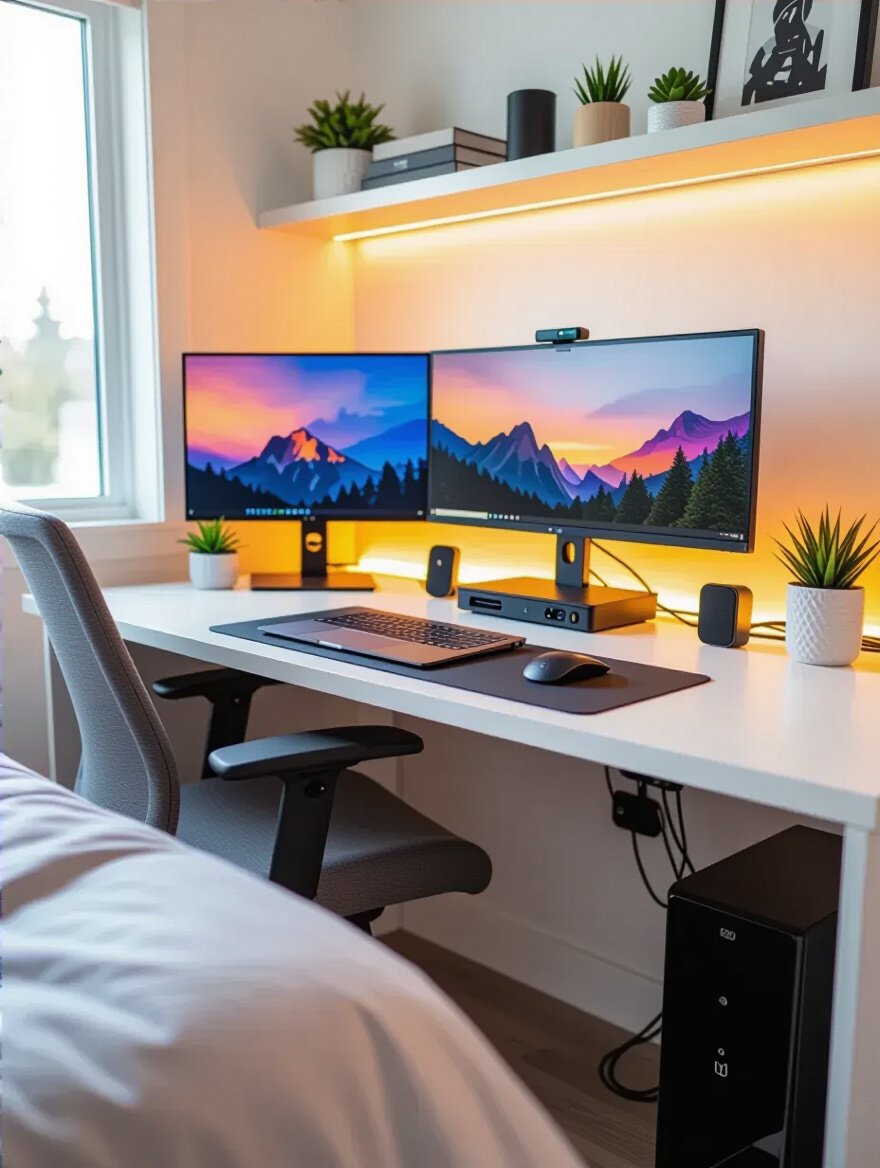
The tools are simple and cheap: velcro cable ties (infinitely better than zip ties), adhesive cable clips for routing wires along the back of a desk, and a cable management box or sleeve to bundle everything together. I once spent 30 minutes helping a client organize the nest of wires behind her son’s gaming PC. When we were done, he just stood there for a minute and said, “It feels so… calm now.” That’s the power of banishing visual clutter.
In the end, this journey is about so much more than decorating. It is about crafting a container for a developing human. You are helping them build their first library, their first studio, their first sanctuary. By focusing on personalization, function, and thoughtful design, you give them more than just a nice room. You give them a space that respects their inner life, supports their growth, and provides a safe harbor in the often-turbulent sea of adolescence.
Don’t feel overwhelmed. You don’t have to do it all at once. Begin with a single conversation. Choose one corner to organize. The process itself is a gift. Let them take the lead, make choices, and even make a few mistakes. The room will grow and change as they do, and that is as it should be. You are not just creating a space; you are giving them the tools to create a world, and there is no greater gift than that.